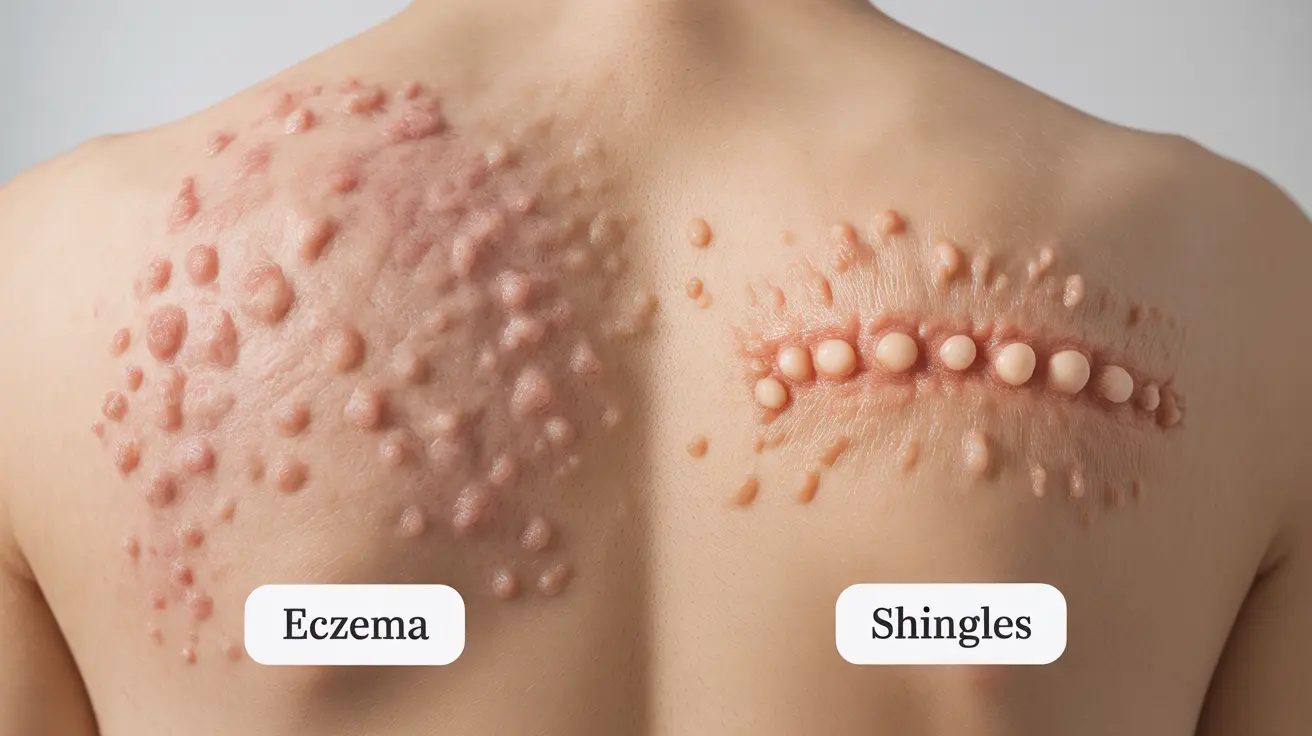When a mysterious rash appears on your skin, determining whether it's eczema or shingles can be crucial for proper treatment. These two skin conditions, while sharing some surface-level similarities, have distinct characteristics, causes, and treatment approaches. Understanding their differences can help you seek appropriate medical care and find relief more quickly.
In this comprehensive guide, we'll explore the key distinctions between eczema and shingles, examining their unique symptoms, causes, treatment options, and when to seek medical attention.
Distinctive Characteristics and Symptoms
While both conditions affect the skin, they present with notably different patterns and sensations:
Eczema Characteristics
- Typically appears as dry, itchy patches
- Often symmetrical on both sides of the body
- Common in skin folds and joints
- May come and go over time
- Usually doesn't cause severe pain
- Often begins in childhood
Shingles Characteristics
- Appears as a stripe or band of blisters
- Usually affects only one side of the body
- Often follows nerve pathways
- Causes burning pain or tingling before rash appears
- Typically lasts 2-4 weeks
- More common in older adults or those with weakened immune systems
Understanding the Causes
The fundamental difference between these conditions lies in their underlying causes:
Eczema Origins
- Immune system dysfunction
- Genetic factors
- Environmental triggers
- Allergic reactions
- Stress responses
Shingles Origins
- Caused by reactivation of the varicella-zoster virus
- Same virus that causes chickenpox
- Triggered by weakened immune system
- Stress can activate dormant virus
- Age-related immune changes
Treatment Approaches
Each condition requires its own specific treatment strategy:
Managing Eczema
- Moisturizing regularly
- Topical corticosteroids
- Immunomodulators
- Identifying and avoiding triggers
- Maintaining good skin care routine
Treating Shingles
- Antiviral medications
- Pain management drugs
- Cool compresses
- Calamine lotion
- Rest and stress reduction
Prevention and Risk Factors
Understanding prevention strategies is crucial for both conditions:
Eczema Prevention
- Regular moisturizing
- Avoiding known triggers
- Using gentle skin products
- Managing stress levels
- Maintaining optimal humidity
Shingles Prevention
- Vaccination (for those eligible)
- Maintaining strong immune system
- Managing stress
- Healthy lifestyle choices
- Regular medical check-ups
Frequently Asked Questions
- What are the main differences in symptoms between eczema and shingles?
Eczema typically presents as itchy, dry patches that can appear anywhere on the body, often symmetrically. Shingles appears as a painful band of blisters, usually on one side of the body, following nerve pathways.
- How can I tell if a rash is caused by eczema or shingles?
Eczema usually causes itching without severe pain, while shingles often begins with burning pain or tingling before the rash appears. Shingles typically forms a distinct band or stripe pattern, while eczema appears in patches.
- What treatments are effective for managing shingles compared to eczema?
Shingles requires antiviral medications and pain management, while eczema is typically treated with moisturizers, topical corticosteroids, and trigger avoidance. Each condition needs its specific treatment approach for optimal results.
- Is shingles contagious while eczema is not, and how does that affect prevention?
Shingles can transmit the varicella-zoster virus to people who haven't had chickenpox, while eczema is not contagious. This means people with active shingles should avoid contact with at-risk individuals until blisters heal.
- When should I see a doctor to get diagnosed if I have a rash that might be eczema or shingles?
Seek medical attention immediately if you experience a painful rash with blisters, especially if it's on one side of your body (potential shingles). For suspected eczema, consult a doctor if over-the-counter treatments aren't providing relief or if the condition significantly impacts your quality of life.




